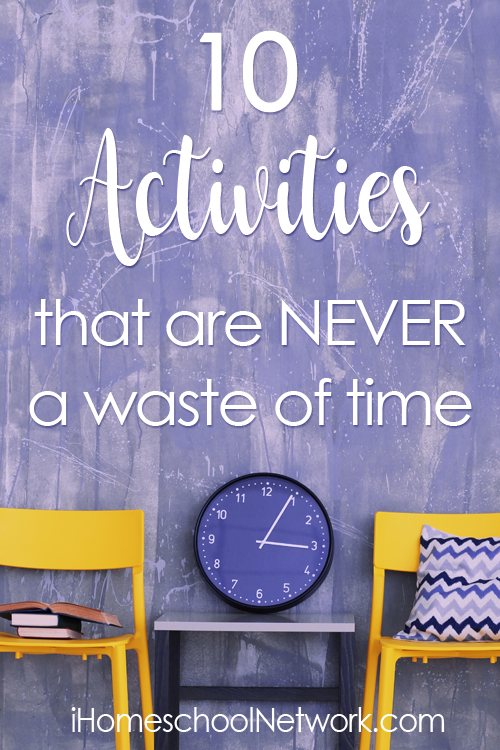This post may contain affiliate links. See our disclosure policy for details.
If you’ve got struggling or reluctant readers, this one is for you. I hope this post inspires you take a break from your everyday reading instruction and read the world around you. Don’t worry! Learning will move forward. You just have to think outside the book.

Teaching a child to read is an amazing experience. I’ve been lucky enough to work with over 100 children learning to read in my career teaching first and second grade. Each child was different, and each one prepared me to teach my own son.
One thing they all had in common was that learning never happened in a straight line. I’ve never met a kid who learned at the even, plodding pace set by text book reading programs.
Sometimes learning seems to stagnate. Other times you’ll see huge jumps in a short amount of time. This makes instruction difficult. Especially when the child doesn’t WANT to learn to read.
Your child might resist learning or downright refuse to sit down and do a reading lesson with you. What do you do then?

The Elephant and Piggie Drama

So we took a break. Even during this month-long break we were learning.
Learning to read happens all over, not just in a book. When I was teaching it was called a “text-rich environment.” That meant wherever the child looked in the classroom she would see words, letters, and symbols.
We’d create signs and labels for everything in the classroom – charts, schedules, and lists. In this way, each child was forced to interact with language all day long – but we weren’t forcing it.
In our homeschool, it’s a little different. We school all over the house and all over town. Most of the text in our home is inside a closed book. Or is it?
Related Post>>> Mo Willems Author Study
After the epic Elephant and Piggie meltdown, I started looking around our environment for other ways to incorporate reading into our day. Once I started “thinking outside the book” I could see the text-rich world that we live in.
As I started pointing out the letters, words, signs, and symbols around us, my son was motivated to figure out what it all meant. His frustration with learning to read was finally trumped by his frustration with not being able to read. That’s when we started moving forward – in leaps and bounds!
When he was ready to read, he picked up that Elephant and Piggie book, and we read in tandem. Then he insisted that we check out every Elephant and Piggie book in the library. We had to request more – since they didn’t have them all available.
Sometimes reluctant readers just need a break. They need time to process.
They need to step away from scripted reading instruction, daily reading routines, and reviews and take a breath. Relieve the pressure. In my experience, it’s after these breaks that breakthroughs happen. If you have a struggling reader or a resistant child, take a break. Try a different angle. Read the world instead of a book.

Reluctant Readers Reading in the World
1. Safety Symbols
There are safety symbols on just about everything. Once you start looking for them, you’ll notice them everywhere. This is a great place to start because kids can figure out what the symbols mean with little to no reading experience.
Shoes with a line through it on the trampoline? No shoes allowed! A dog in a circle with a line? No dogs allowed at this park! Skull and crossbones? Yep, that’ll kill ya.
 2. Street Signs
2. Street Signs
Similar to safety symbols, street signs are easy to understand for beginning readers, and they are everywhere!
But be prepared – once your child understands what a Stop Sign means you’ll need to make a full three second stop every time. I curse the day I taught my son what a speed limit sign said! “Mom, the speed limit is 45. You’re going 49. Slow down, Mom! Slooooow doooooown!” Ugh. Backseat drivers.
Point out signs as you pass them in the car or on a walk. Say the letters in S-T-O-P and talk about what Yield means and why there is one that says “No Turn on Red.” Read the name of your street, house numbers, and signs at the park.
3. Menus
Read a menu at a restaurant or decide on take-out together. I can clearly remember reading a menu with my mom: I sounded it out, “French Freeze.” My mom said she’d never heard of french freeze. “Think about what would be on a menu, and try again,” she said. Oh yeah, fries! French fries! It makes sense. My six-year-old self had an ah-ha moment. It’s stuck with me ever since.
Sound out the names of foods. Can your child figure out what’s on the menu? Encourage common sense thinking and educated guessing.
 4. Maps
4. Maps
Traveling? Take a map along with you and trace your route. Even if you’re not going far.
Many museums, malls, and tourist attractions have free maps available. Read the symbols and point out the names of places you know.
5. Advertising
The first sign my son ever read aloud was for a DQ Blizzard. He read it from the back seat of the car, and I choked up right there in the Dairy Queen drive-thru.
Look for (kid friendly) advertising. Can they figure out what the words say with help from the pictures? Point out letters and sound it out. When kids start to read signs, it’s truly amazing. Their eyes open and suddenly they understand the whole world around them.
Take this information with you. Ten Other Ways to Practice Reading printable is included in our K-2 enrichment pack!

View / Print your enrichment pack here.
Reluctant Readers Reading Around the House
6. Cookbooks
 Instead of giving directions verbally, look at a recipe together. My son especially liked looking through children’s cookbooks.
Instead of giving directions verbally, look at a recipe together. My son especially liked looking through children’s cookbooks.
Read the list of ingredients before you take everything out. Point out the measurements. Read the instructions step-by-step as you complete them. You’re reading together, and *bonus* your child is also learning how to follow written directions, measure, and cook.
7. Grocery Lists
Check out your grocery circular together or browse the coupons online. Read the names and prices of all your favorite foods.
Write a grocery list together – or write one yourself and hand it to your child. If they’re not reading yet they don’t know if you’re picking up cake or bananas. They might just be curious enough to find out.
 8. Calendars
8. Calendars
We’ve got a lot of calendars and planners around our house. My kids are naturally curious whenever I write something down, especially when I color code it with their special color.
This is a picture of our 4 x 4-1/2 foot family chalk board calendar. It’s in our kitchen – something they see every day that we talk about often. Even the baby will point to the “ABCs” on the calendar. If you have a large calendar in your home, use it. It’s a teaching aide – just don’t tell the kids!
See how we use our chalk board>>> 3 Steps to Family Organization!
 9. Packaging and Directions
9. Packaging and Directions
There is a TON of packaging and directions that come into our home every day. Start looking at it a little more closely and reading the names, symbols, and directions on the outside.
Narrate your thoughts when you read the ingredients, expiration date, or nutrition facts for food. Pick up the mail and look through it together.
10. Labels
If you feel the urge, you can buy a p-touch and label everything in your house. Or you could start looking more closely for the names and labels that are already there.
Read brand names on all of your electronics and the funny sayings on all of your coffee mugs. When you start looking, you’ll see words all over the place!
I hope this gives you a few good ideas on how to encourage your child to read without forcing a reading lesson. My general rule of thumb: if there are tears it’s time to stop.
Don’t be afraid to step away from the curriculum you’re using and teach from your heart. Spark their interest in the world around them. Encourage reading by being a reader.
Then, get back to business.
How do you encourage your reluctant readers? Drop a comment below with your tip!
Need another alternative? Try poetry! Start right here >>> Teaching Japanese Haiku Poems to Children + Haiku Worksheets
Proud to be featured on iHomeschool Network’s
10 Activities that are Never a Waste of Time


Ashley helps parents who want to homeschool find the resources they need to successfully teach their children. Ashley is a former teacher, current homeschooler, published author, and designer behind Circle Time with Miss Fox printables as well as the creator of this website, The Homeschool Resource Room.

I had to comment and say I have that exact same mug. 🙂
And our experience has been almost identical. My Kindergartener only vaguely liked reading, fighting it more than not. We put it all away and now she’s reading and writing as she’s curious about things and will even read an Elephant and Piggy book (I think the fact that we went to a play that featured those characters helped in her excitement for those characters). Patience is the hardest lesson when learning to read, and it’s Mom’s lesson!
Lol I love this mug! That’s so great that she’s reading and writing now 🙂 You’re so right about patience. The instinct is to push them forward, but sometimes when we let them go is when they fly on their own <3
When I was teaching sixth grade, one of my students assumed only nonfiction counted for reading logs so even though he read every day, he didn’t think he could get credit for it. That experience prepared me for switching out non-fiction for fiction when my daughter displayed more interest in science books and cookbooks. She’ll read a story now without complaining, but her first choice would still be an encyclopedia.
Yes, I love it! Read anything and everything 🙂